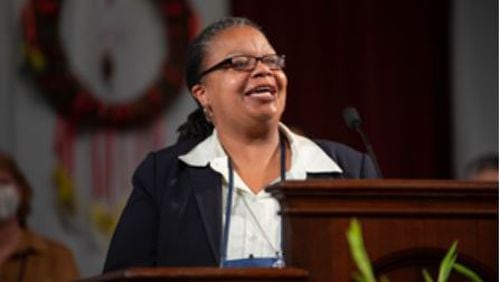WASHINGTON -- During the 2012 presidential campaign, hedge fund billionaire Ken Griffin famously complained that the wealthy have "insufficient influence" in politics, which is kind of like saying that a crocodile needs even more teeth, when the 24 it has do just fine, thank you very much.
But as money pours into the 2016 campaign -- where the issue of income inequality has been a powerful touchstone -- the wealthy might be feeling a bit more empowered.
No longer are donors bound by the strict contribution limits of just two years ago, when a mere $32,400 was the maximum amount you could annually contribute to either the Democratic or Republican national committee. Under new rules, that amount, which inflation pushed to $33,400, has increased tenfold: to $334,000.
But wait. Among all the party outlets now available for contributions, a single donor over the course of the two-year election cycle can actually give more than $1.6 million.
A couple, should they be feeling similarly generous, could write checks totaling more than $3 million.
"The overall impact has meant more money for parties ... but it also means wealthy people get a bigger role in our elections -- and they get access and influence to politicians at the convention, at donor retreats and at fundraisers," said Nick Nyhart, president and CEO of Every Voice, an advocacy group whose aim is to reduce the role of big contributors in politics. "Access regular voters could only dream of."
Consider: Four years ago, more than a quarter of the disclosed election contributions came from just slightly more than 31,000 people across the entire U.S., according to the Sunlight Foundation, a nonpartisan, nonprofit government and politics watchdog organization. That's one-ten-thousandth of the population.
In 2016, that tiny niche of well-heeled donors can give even more.
Small donors do get some voice in politics. Sen. Bernie Sanders of Vermont has raised $183 million, with about two-thirds coming from small contributions, according to Open Secrets, a campaign-finance watchdog group. The Sanders campaign has said the average donation is $27.
But big donors often speak more loudly -- and directly to the establishment.
Mitchell Berger, a longtime Democratic Party fundraiser from Florida, said big donors had lots of reasons for their largesse, and many enjoyed the perks that came with it.
"There are people who really think that this is their way of helping to build a better community, on both sides," he said. "Do they like to get their picture taken (with politicians)? Sure. Get their two cents heard at a dinner? If a guy gives $300,000 in a billion-dollar race ... 'Yeah, I'll take your phone call.' You take a billion-dollar race and someone gives $1.5 million, that's dangerous."
Parties have taken a back seat moneywise since the U.S. Supreme Court in 2010 opened the door to unlimited donations to outside groups known as "super" political action committees.
The new rules enable high rollers such as Griffin and others to boost party coffers, and they have.
"Political parties are trying to become relevant," Berger said. "That's what happening."
The fundraising reports of the Democratic and Republican national committees' 2016 convention accounts, for example, show donors who have either kicked in the max -- $200,400 over a two-year campaign cycle -- or close to it. Among them: hedge fund operators, current and former corporate chieftains and family members, partners at white-shoe law firms, high-tech and Hollywood executives.
Efforts to contact several donors, as well as the chairs of the Democratic and Republican national committees, were unsuccessful.
As of March 31, Republicans had raised more than $10 million in their convention account; Democrats, $3 million.
"Conventions are very expensive," former RNC Chairman Jim Nicholson said, adding that parties "can't afford to divert the money they get to run their political operations. It's beholden on them to go out there and get corporate support."
He said the quadrennial events were attractive to business because they provided "opportunities for pretty good exposure." Packed with lawmakers, "it is a target audience ... . There's some access opportunities."
Nicholson agreed that the new contribution caps represent a lot of money, "but I'd rather see it go to the parties than the super PACS, which routinely raise that kind of money, when the parties are more disciplined with the uses of the money. They're more accountable ... more transparent."
So how did the ability to donate to the national political parties quickly balloon?
In 2014, Congress eliminated the taxpayer-funded Presidential Election Campaign Fund, which in part grew out of the campaign finance revisions put in place after the Watergate scandal in the 1970s.
Although tax dollars will still be spent on security, this summer's Republican convention in Cleveland and Democratic gathering in Philadelphia will be the first since 1976 without any other federal support.
The parties needed to tap another source of cash. So Congress did something else in 2014, at the very end of the year, when few were paying attention.
Scrambling to put together an annual government-spending bill, lawmakers tucked a few paragraphs into the final pages to allow the parties to create three additional federal campaign accounts: one to help finance their conventions, another for headquarters' costs and a third to pay for recounts and other legal steps.
Campaign finance watchdogs were caught off-guard.
"Those provisions were written only for the wealthiest individuals in the country, the super-rich," said Fred Wertheimer, president of Democracy 21, a campaign-finance advocacy group. "Those are the only people who can give that money and there is a price to pay when you raise those kinds of contributions."
About the Author




